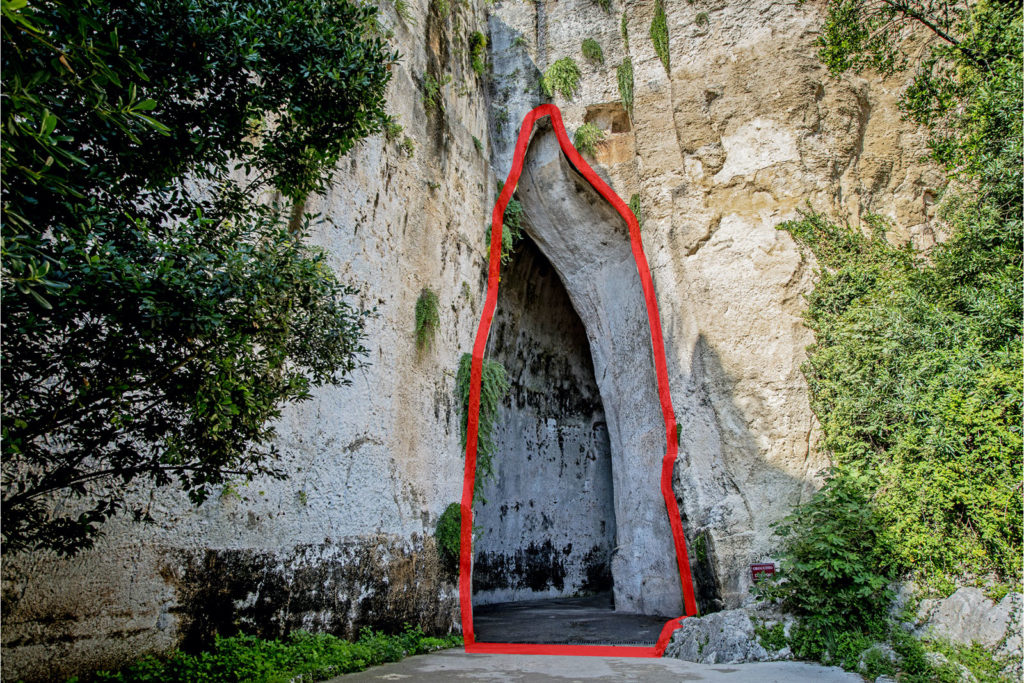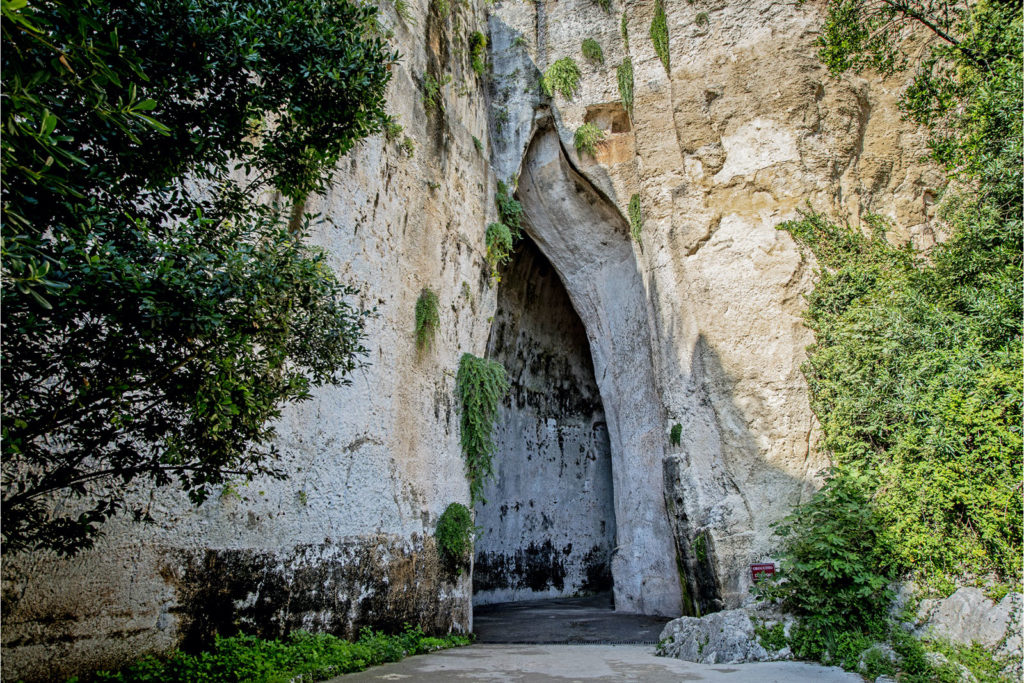The air element, represented by a special grotto called the Ear of Dionysius, is linked in this case to an acoustic phenomenon: the rumble of air between the narrow walls of this cave!
The northern area of the Neapolis Archaeological Park is characterised by the latomìe, from the Greek lytos meaning “stone”. The latomìe are in fact natural caves, the largest being the Latomìa del Paradiso. Inside it is the famous Ear of Dionysius. It is said that this nickname was given by a very important Italian painter:
Caravaggio
.
The cave is in fact shaped like an ear. It is around twenty metres high and very deep: the space inside it seems to follow an S-shaped path, like a small labyrinth! Because of its shape and depth, if you try to shout something, the sound is amplified up to sixteen times! In fact, its name recalls the main characteristic of this place: its acoustics.


Many poets and artists in the past have visited the Ear of Dionysius, attracted by its air of mystery. The place also hosted many musicians, who went to the cave to rehearse, blowing the horn and beating drums. It is also said that in the latomìe the feared tyrant
Dionysius
imprisoned many Athenian soldiers defeated in battle, now condemned to slavery. Here the prisoners, nailed to their chains, were forced to suffer the freezing cold in winter and the scorching heat in summer.
According to legend, thanks to the extraordinary game of echoes between the cave walls, the tyrant could hear every word spoken by the slaves.
Thinking they were alone, the slaves would speak freely in their stone prison.